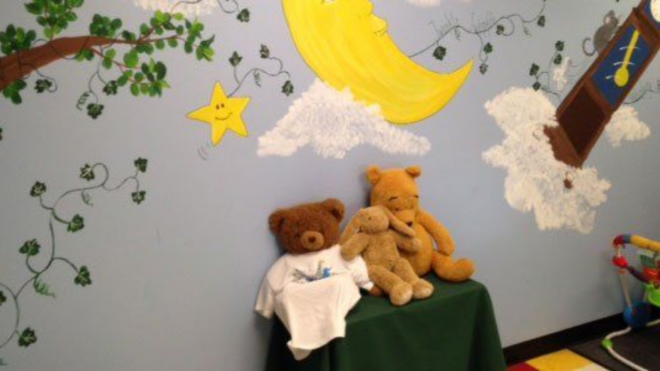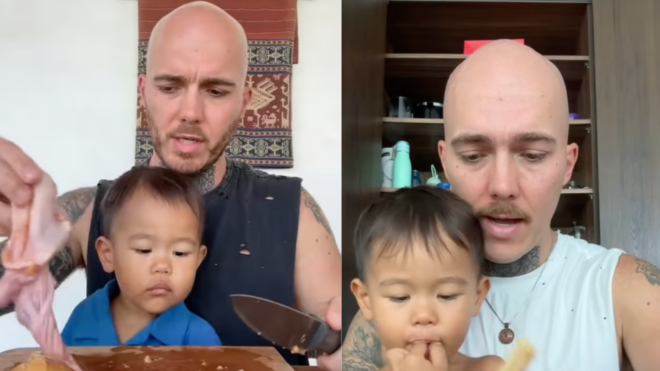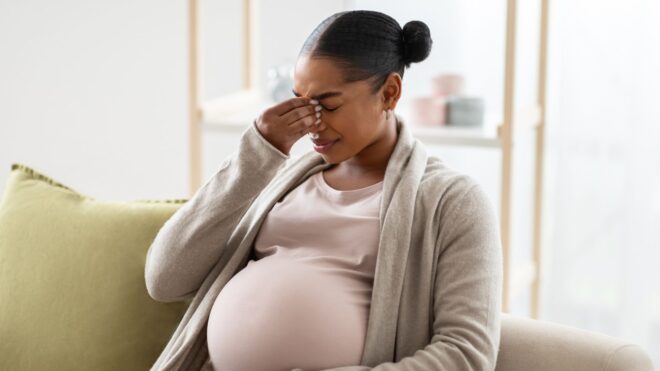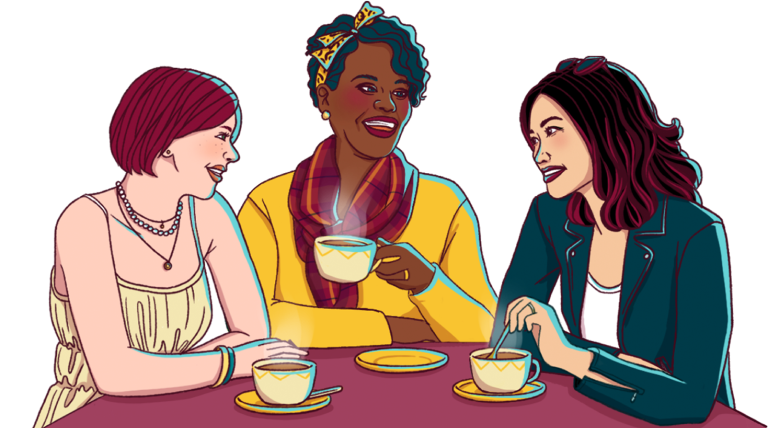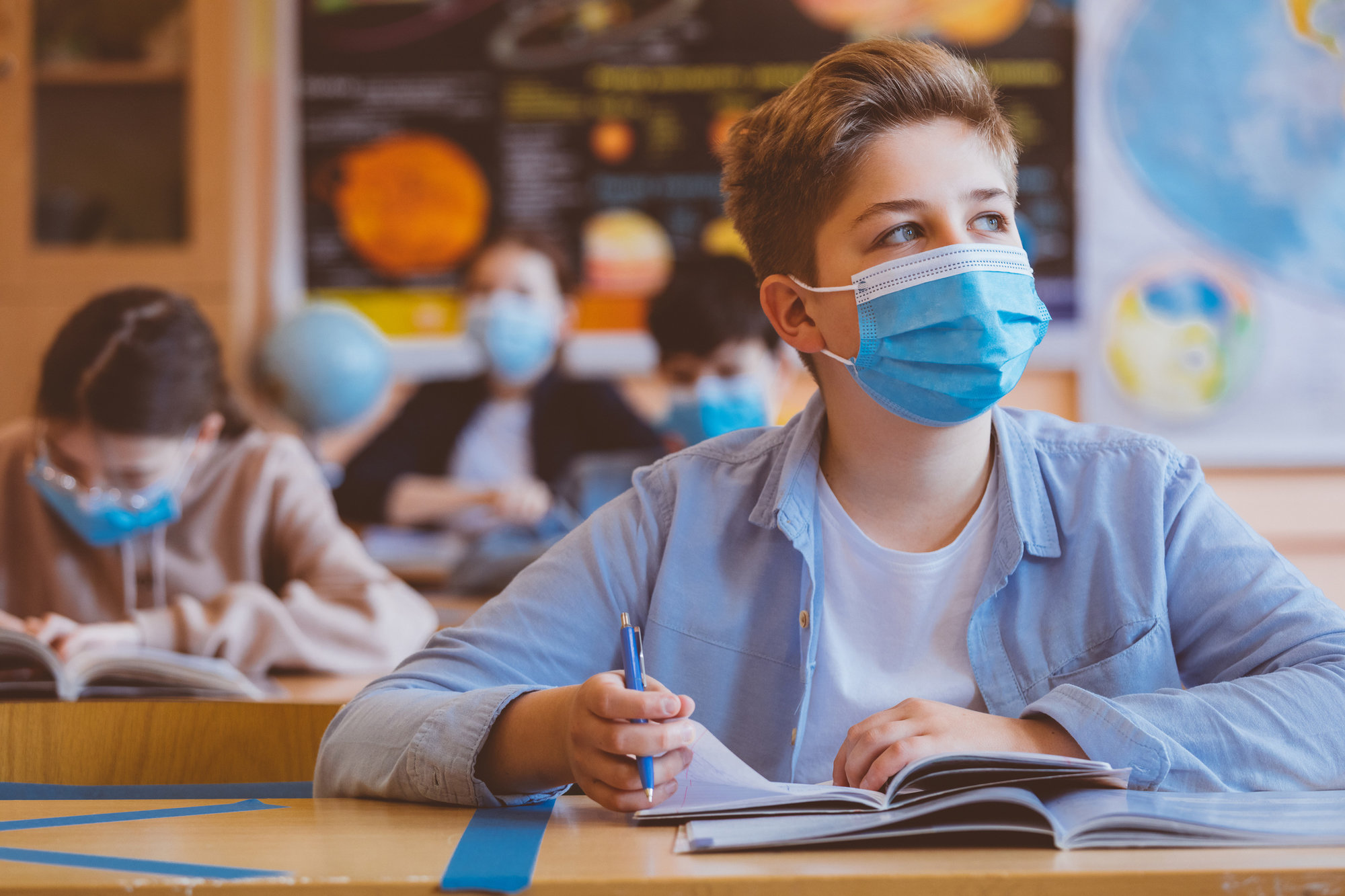
Bullying has always been a concern for parents — especially those whose kids are heading into their middle school or high school years. But this year, it looks like they've got a lot more to be worried about than some run-of-the-mill cyberbullying. Experts with the Centers for Disease Control and Prevention now fear that "mask bullying" will be a trend in schools throughout the country if districts do not mandate mask-wearing policies. The consequences of that peer pressure could be devastating.
Although the term "mask bullying" may be new, we've seen it playing out in headlines for months.
Consider the California woman who went ballistic in a North Hollywood Trader Joe's back in June, yelling at customers who wore masks. Or the one in San Diego, who went viral that same month for screaming in the face of a Starbucks barista who refused to serve her without a mask.
And then there's the Arizona dad who went on a profanity-filled anti-mask tirade of his own in an undisclosed grocery store earlier this month. He had to be dragged out of the store after shouting at customers wearing masks and calling them all "sheep."
As the nation continues to reopen, anti-mask crusaders won't just found in grocery stores.
Last week, the CDC urged schools across the country to implement mandated mask-wearing policies instead of "optional" ones — the latter of which have been adopted in many schools that have already opened.
Not only will this keep kids and staff even safer, but it will also eliminate a social stigma that is bound to arise when some children choose to wear masks and others do not.
According to the agency's website, "Schools should have a plan to prevent and address harmful or inappropriate behavior."
(Yep — as if schools didn't already have enough to plan for.)
"Not all families will agree with school policies about cloth face coverings," the website continued. "Schools should have a plan to address challenges that may arise and refer parents, caregivers, and guardians to CDC's guidance on cloth face coverings."
Along with implementing mask-wearing policies, the CDC also had some other guidance for parents and administrators.
For starters, the agency asked parents to show kids how to correctly wear masks now, and assure them there is no stigma in wearing them before they head back to school. It also encouraged them to display good mask-wearing behavior themselves, so their children learn by example.
The agency advised elementary school teachers and staff to be on hand to show kids how to properly wear their masks and "use positive reinforcement to increase the likelihood that students will follow the rules."
Of course, the real bullying tends to start in middle schools.
That's when the CDC suggested teachers show educational videos that explain why mask wearing is important or have classroom discussions about their importance. They can even use science class to teach how respiratory droplets can quickly spread infectious disease, the agency noted.
"High schools can show videos of celebrities wearing masks, ask students to write a short science paper on face coverings and create a competition for the best way to get the message out that masks are important," the website added.
(A full list of the CDC's suggestions for face mask use in schools can be found here.)
By now, the importance of mask-wearing is well-documented.
Multiple experts and health agencies have declared that wearing a cloth face covering can greatly reduce the risk of spreading and contracting the coronavirus because it literally blocks the path of respiratory droplets, the primary mode of transmitting the virus. And a recent study by Texas A&M found that not wearing one dramatically increases your risk of getting COVID.
Of course, not all face masks are created equal. Research from the Duke School of Medicine found that the N95 was the most effective blocker of COVID-19, whereas neck fleeces (aka gaiter masks) often used by runners were the least effective. But the most commonly worn masks — three-layer surgical masks and cotton masks — were actually found to be pretty effective.
Considering kids across the country are already heading back to school, the importance of mask wearing cannot be overstated.
And yet, school districts in several states are still not mandating the measure. So far, that hasn't had very positive results.
Earlier this month, a photo taken on the first day of school at North Paulding High School in Dallas, Georgia, went viral for showing a crowded hallway full of students. Some were wearing masks, but many (an alarming amount, actually) were not. That's because North Pauding went back with a "mask-optional" policy, and considering this is a high school … well, many students opted out. Maybe because their parents told them masks do nothing. Maybe because they felt it wasn't "cool." Or maybe because they felt their risk of getting the coronavirus wasn't great enough.
Sadly, that couldn't be further from the truth.
Nearly 100,000 children tested positive for the coronavirus in the last two weeks of July, new research shows.
Cumulatively, the US has seen more than 338,900 pediatric cases of the virus since the outbreak began. Although the vast majority of them may not have severe symptoms, or even be symptomatic at all, the fact remains that they became vessels of transport for the virus — to friends, neighbors, other family members … or virtually anyone else they came into contact with.
And the there's this: The state of Georgia, where North Paulding High School is located, isn't doing too well. It's one of many Southern states to have seen a surge in COVID-19 cases since the summer began, with more than 238,800 cumulative cases and over 4,700 deaths to date. So it perhaps comes as little surprise that North Paulding High School had to be temporarily closed just days after reopening when a COVID-19 outbreak was reported in nine staff members and students.
The notion that children can't get the virus -- or that they in some way pose no risks if they do -- is simply untrue.
It's also potentially dangerous.
"I fear that there has been this sense that kids just won't get infected or don't get infected in the same way as adults and that, therefore, they're almost like a bubbled population," Michael Osterholm, an infectious diseases expert at the University of Minnesota, told the New York Times.
Osterholm was speaking out after a large-scale study in South Korea found that older kids are capable of spreading the coronavirus just as efficiently as adults.
In short: Wearing a mask has the proven ability to save lives — and kids (as well as many adults, to be honest) need to hear this over and over and over until they get it. Especially now, before they head back into schools and the warnings come too late.

